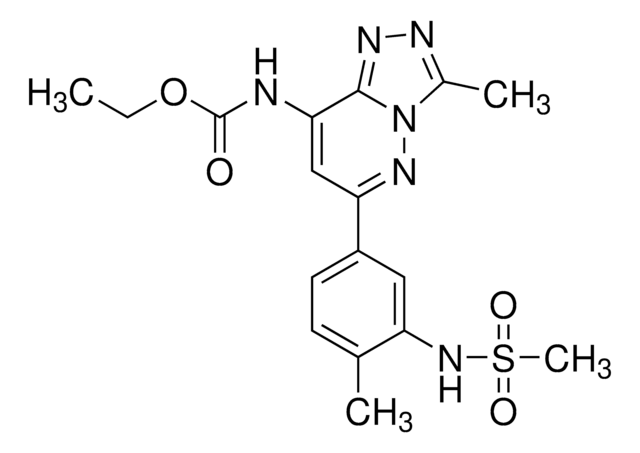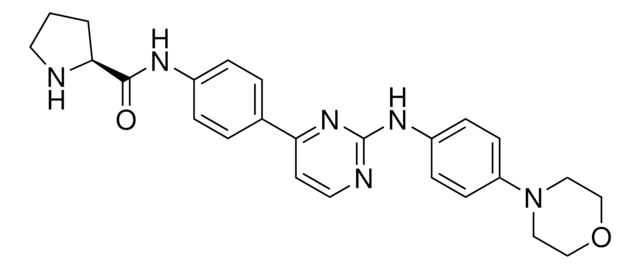SML2444
BAY 41-4109
≥98% (HPLC)
Synonim(y):
(-)-Methyl (4R)-4-(2-chloro-4-fluorophenyl)-2-(3,5-difluoro-2-pyridinyl)-6-methyl-1,4-dihydro-5-pyrimidinecarboxylate, (-)-Methyl 4-(2-Chloro-4-fluorophenyl)-2-(3,5-difluoro-2-pyridinyl)-6-methyl-1,4-dihydropyrimidine-5-carboxylate, BAY41-4109, Bayer 41-4109, Methyl (4R)-4-(2-chloro-4-fluorophenyl)-2-(3,5-difluoro-2-pyridinyl)-1,4-dihydro-6-methyl-5-pyrimidinecarboxylate
About This Item
Polecane produkty
Próba
≥98% (HPLC)
Postać
powder
kolor
white to beige
rozpuszczalność
DMSO: 2 mg/mL, clear
temp. przechowywania
−20°C
ciąg SMILES
CC1=C(C(OC)=O)[C@H](C2=C(Cl)C=C(F)C=C2)N=C(C3=NC=C(F)C=C3F)N1
InChI
1S/C18H13ClF3N3O2/c1-8-14(18(26)27-2)15(11-4-3-9(20)5-12(11)19)25-17(24-8)16-13(22)6-10(21)7-23-16/h3-7,15H,1-2H3,(H,24,25)/t15-/m0/s1
Klucz InChI
FVNJBPMQWSIGJK-HNNXBMFYSA-N
Działania biochem./fizjol.
Kod klasy składowania
11 - Combustible Solids
Klasa zagrożenia wodnego (WGK)
WGK 3
Temperatura zapłonu (°F)
Not applicable
Temperatura zapłonu (°C)
Not applicable
Certyfikaty analizy (CoA)
Poszukaj Certyfikaty analizy (CoA), wpisując numer partii/serii produktów. Numery serii i partii można znaleźć na etykiecie produktu po słowach „seria” lub „partia”.
Masz już ten produkt?
Dokumenty związane z niedawno zakupionymi produktami zostały zamieszczone w Bibliotece dokumentów.
Nasz zespół naukowców ma doświadczenie we wszystkich obszarach badań, w tym w naukach przyrodniczych, materiałoznawstwie, syntezie chemicznej, chromatografii, analityce i wielu innych dziedzinach.
Skontaktuj się z zespołem ds. pomocy technicznej




